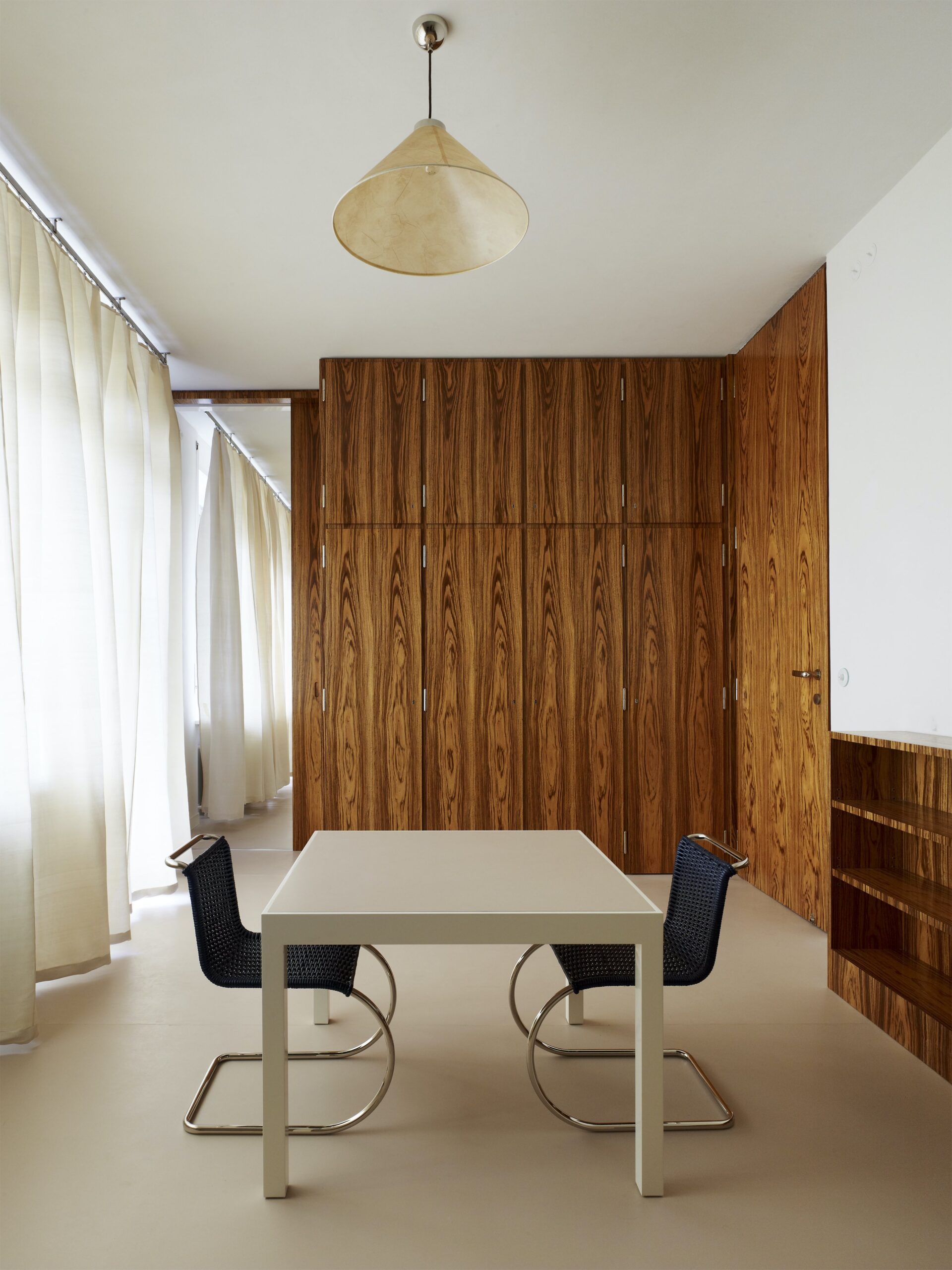Nearly a century after its construction – including a time when its owners were forced to flee for their lives and its spacious living room was used to stable horses – the minimalist splendour of Mies van der Rohe’s Villa Tugendhat once again shines through
 Photography by David Židlický
Photography by David Židlický
Words by Anthea Gerrie
On the 95th anniversary of breaking ground on his last residential masterpiece in Europe, Mies van der Rohe would be gratified to know the revolutionary steel-framed house of glass the Nazis, Communists and even its original renovators did their best to destroy is now once again the glory of Brno, second city and modern architecture capital of Czechia.
Villa Tugendhat is one of half a dozen fine pre-war mansions which can be visited in the city that showcased early 20th century building philosophies, but the only one with a huge living space devoid of supporting walls, which can be opened entirely to the garden via gigantic windows retractable from ceiling to floor at the touch of a button.
It’s a technical tour de force unknown in Europe in 1929, when Mies drew up the plans for Fritz and Grete Tugendhat, future-embracing industrialists who gave him carte blanche on budget while he was simultaneously designing his Barcelona Pavilion. No surprise, therefore, to see a trio of emerald leather Barcelona chairs in the Tugendhat house, alongside its own eponymous chairs – now classics still in production – designed especially for the owners.
 Photography by David Židlický
Photography by David Židlický
What strikes the visitor first and foremost is the richness of materials specified by the architect whose mantra was famously ‘less is more’. That didn’t stop him insisting on a slab of Moroccan onyx costing as much as four houses as an internal divider to close off the library where Tugendhat conducted business and the couple pursued human rights efforts as the Nazis closed in on Czechoslovakia.
The onyx is no mere functional element in this functionalist mansion; it is a jaw-dropping decorative device which appears to catch fire as the sun lowers in the sky – red and orange flickers rippling across the veined pale gold surface from both the library and window-facing sides. And richness imbues the wood panelling of the main room, its dining area enclosed in a semicircle of Macassar ebony.
The entry and internal doors in the conventionally arranged street-level top floor of the house are monumental slabs of rosewood 3.2m high – when the clients demurred about the cost and weight, Mies reputedly threatened to pull out of the project unless his grandiose specs were agreed.
 Photography by David Židlický
Photography by David Židlický
A beautiful curved wall of white glass wrapping round the internal travertine staircase, the only remotely ornamental item at street level distinguishing the presence of the three-storey house whose technical equipment is buried on its own floor at the bottom, was the first element to be vandalised by the Nazis when they occupied the house after the Tugendhats and their children were forced, as Jews, to flee for their lives.
They bricked up the wall, looted the contents and disassembled the Macassar dining-room panels (later recognised by a professor at the Brno university where they had been left languishing for decades). Russian cavalry arriving with their horses after the war did more damage and a botched 1980s reconstruction effort was decried as poor and inauthentic.
In 1967 Grete Tugendhat revisited the home she lived in for only eight years, accompanied by Mies’s grandson Dirk Lohan from the architect’s Chicago studio. She shared her recollections of the original design, and finally proper renovations took place over the first decade of the 21st century, at a cost of $9m. Interestingly, that fabulous wall of onyx, which remains the star feature, was never damaged or even threatened; the owners cannily arranged for it to be concealed and protected by boarding up before being forced to leave their fabulous, futuristic house of glass, now a UNESCO World Heritage Site, forever.
The story originally appeared in ICON 215, Spring/Summer 2024. Get a curated collection of design and architecture news in your inbox by signing up to our ICON Weekly newsletter

















